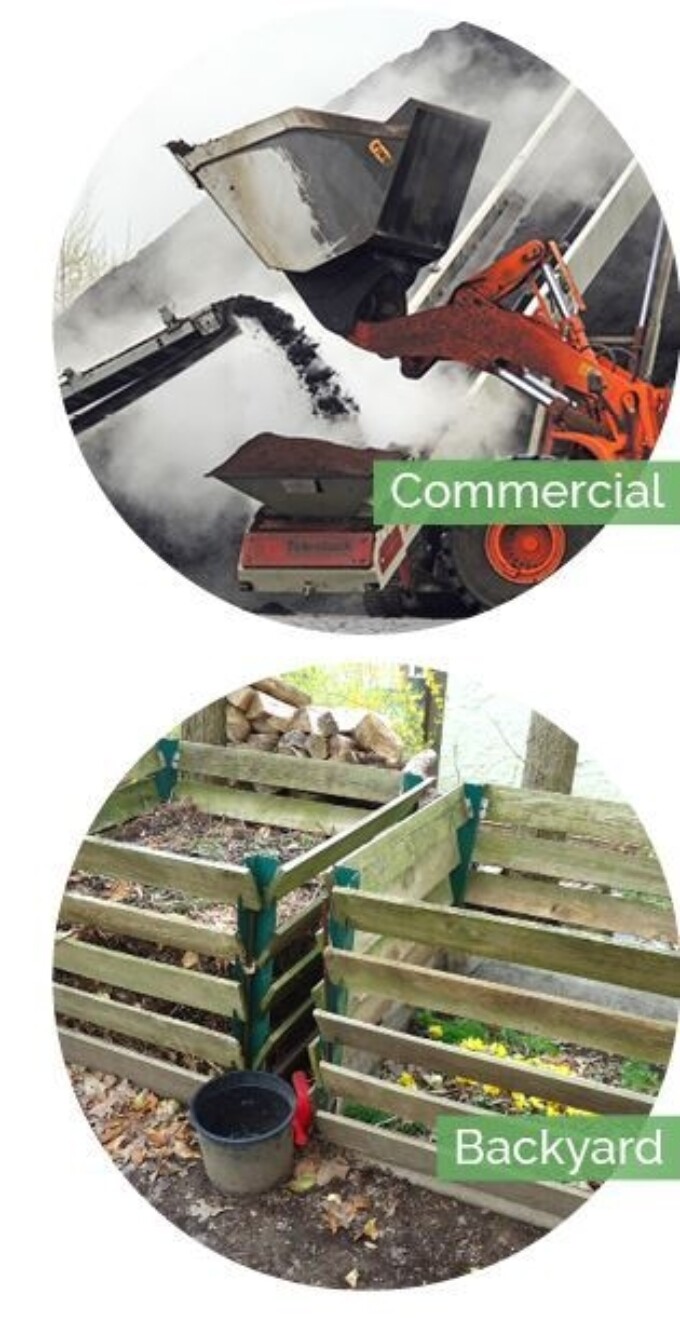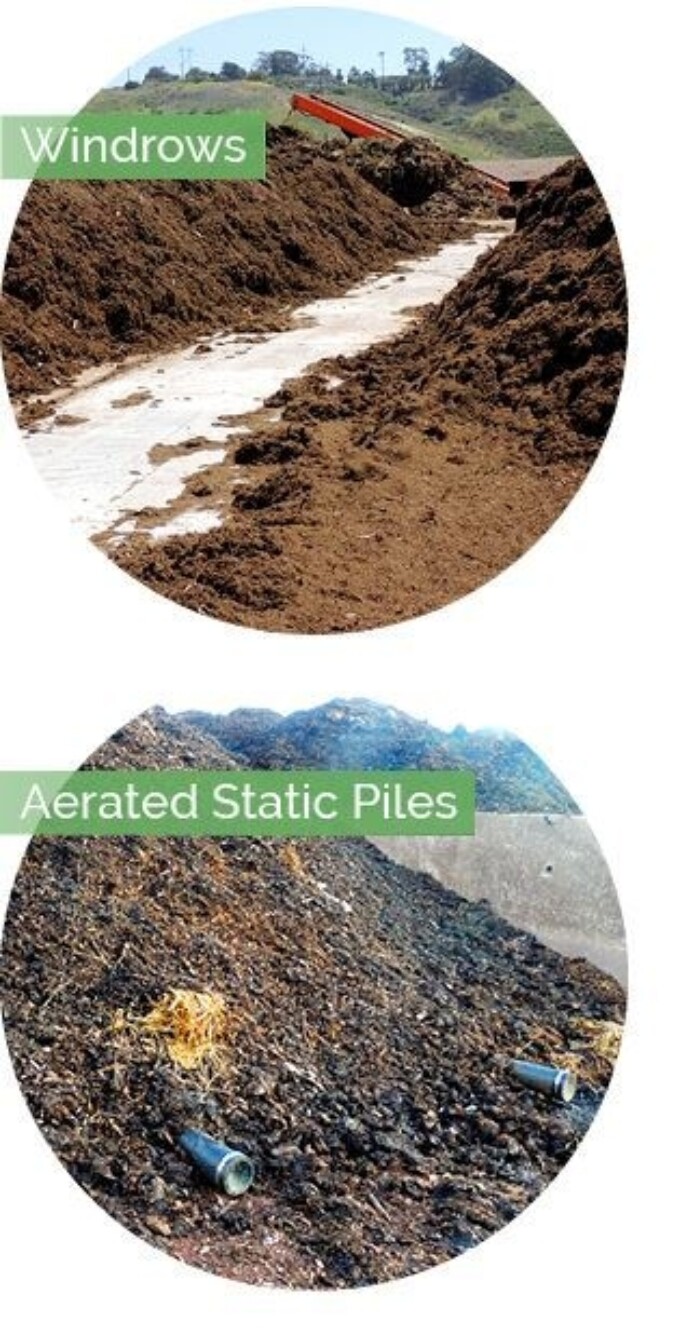Composting is a natural process that turns organic materials into a valuable soil amendment. As an organic-matter resource, compost has the unique ability to improve the chemical, physical, and biological characteristics of soils. Compost is produced through the activity of aerobic (oxygen requiring) microorganisms. These microbes require oxygen, moisture, and food in order to grow and multiply. When these factors are maintained at optimal levels, the natural decomposition process is greatly accelerated. The microbes generate heat, water vapor, and carbon dioxide as they transform raw materials into a stable soil conditioner. Compost can be produced from many “feedstocks” - raw organic materials, such as leaves, manures, food scraps, wet/soiled papers and certified compostable products.

Commercial (or Industrial) composting happens when large quantities of organic material are collected and processed. Businesses like stadiums and restaurants that collect compostables in their front and back of house operations send their material to commercial facilities, usually by contracting with a hauling provider the same way you might for trash or recycling services. Home or Backyard composting happens at a much smaller scale, usually in backyard piles or small in-vessel systems.

The two most common methods of commercial composting in practice today are Windrow and Aerated Static Pile (ASP). Windrows are long rows of organic material that must be turned regularly to improve porosity and oxygen content, mix in or remove moisture, and redistribute cooler and hotter portions of the pile. ASP is a newer technology that allows for windrow size piles or smaller of organic material to compost without the need for turning. These systems generally use perforated piping to control the amount of oxygen getting to a compost pile, which can result in faster biodegradation times than traditional Windrow systems. A third method that is used by Cedar Grove Composting in Washington is “In-vessel, positive aeration, membrane laminate technology”, commonly known as the Gore system.
All three of these methods require diligent management of temperature, oxygen, and carbon / nitrogen ratios to produce quality finished compost. The time required for compostable products to break down varies with the type of facility, the specific material(s) used to make the product, and the combination of time, temperature, and moisture levels. Click here to learn more about field testing for compostable products.
The term “feedstock” usually refers to what materials are accepted into a compost facility. There are many facilities that only take yard waste, and there are others that take food waste and compostable packaging alongside or separately from yard waste. A 2017 study conducted by BioCycle determined that there were 4,713 total compost facilities in the United States. Of those 4,713 facilities, 57% accept yard trimmings only, 5% accept yard trimmings and food scraps only, and another 13% accept “Multiple Organics”, which includes food scraps. Click here to learn more about composting infrastructure.
Quality finished compost enriches soil, helping to retain moisture and suppress plant diseases and pests. It also reduces the need for chemical fertilizers, many of which are harmful to the environment.
Additional Resources
US EPA, “Types of Composting and Understanding the Process”
US Composting Council, “Use Compost”
Photos by Doug Pinkerton, courtesy BioCycle.net; "Backyard" image: Tomwsulcer, CC0, via Wikimedia Commons